Life is full of surprises. It happens that I currently live in a micro-district of Vilnius where parts of HBO’s miniseries “Chernobyl” were shot. Though my friend worked in the production of this movie and I knew about the project for more than a year, I never connected the dots. Personally, I’m not a big fan of watching series and my friends need to get really creative trying to persuade me into watching any. It literally took one of them pointing it out to me that I live in the location where it was shot, therefore I need to watch it. I think I got convinced, but before that, I’ve decided to go out and look around where it was shot.
More info: ctdots.eu
Enter the Fabijoniškės

The building next to the house I currently live
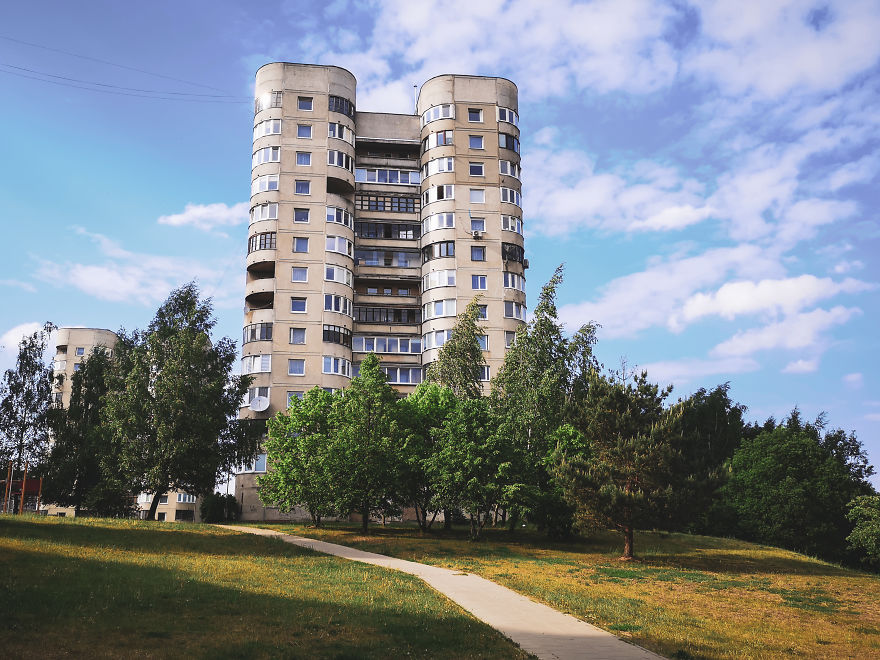
I only live here for one and a half month, so I was not around the last summer when it was shot. Since I haven’t seen any series yet, I had to do some research to find the places. Unsurprisingly, Lithuanian media had plenty of information of it and without any further ado I set out to make a walk through this micro-district – Fabijoniškės. It is definitely not a place to see in Lithuania and I don‘t expect anybody to know it even outside of Vilnius. For that reason, I want to give some background information before going deeper. This won’t be an epic story of Gilgamesh, but hey, we have to appreciate what we have.
Šeškinė walking route
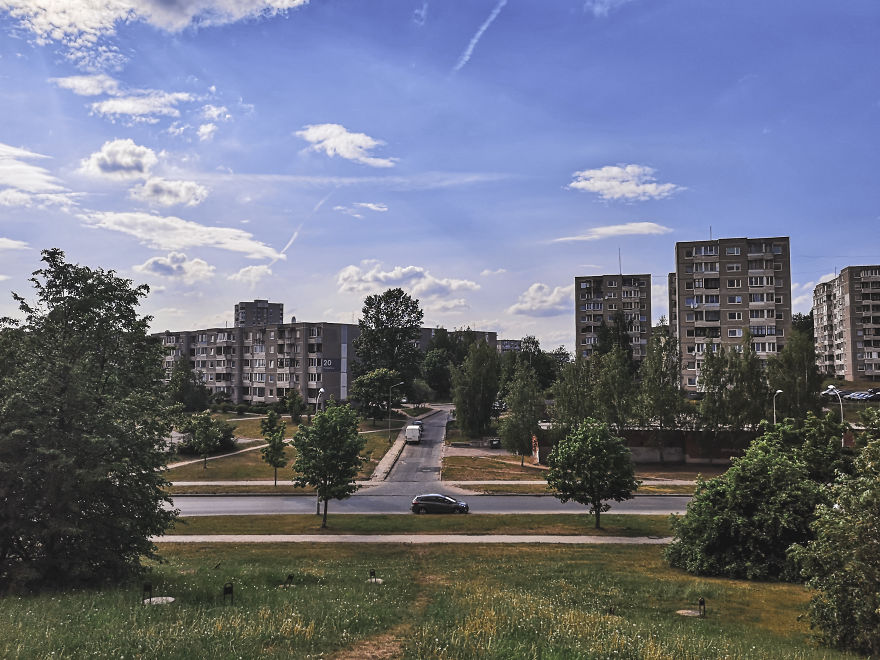
Location: Vilnius
Starting point: Fabijoniškės
Target: Žvėrynas
Distance (one way): 6.3km
Difficulty: Easy
Duration: ~ 2h
Urban hiking in Vilnius
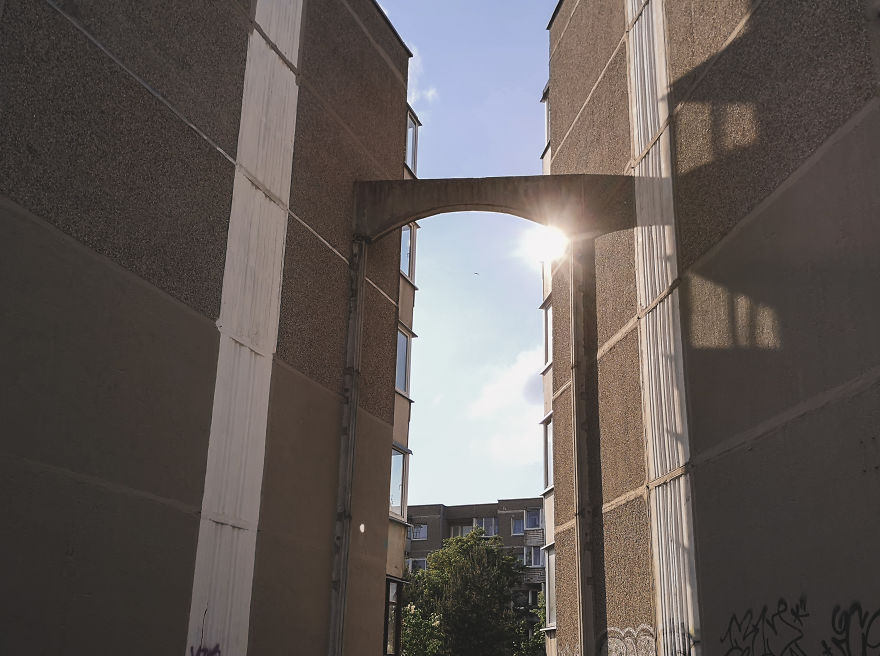
Vilnius is a good place for urban hikers, the whole city has 40 really well-marked walking routes. I’ve noticed one just next to the place I live which goes from From Fabijoniškės through Šeškinė to one of the central districts Žverynas.
I wanted to do the walk before, but now I finally have a really good reason to do it. I‘ve never done any of official walking route in any city, so I was not entirely sure what to expect from it. First time I saw it, I laughed, but with time the idea of this hike seemed so ridiculous that over time it got me curious. You have to understand that nobody likes these micro-districts of Soviet era and there is nothing to see here and Fabijoniškės is the most mediocre of mediocre, the greyest of grey.
Well, the universe started with a bang and this walking round starts with this
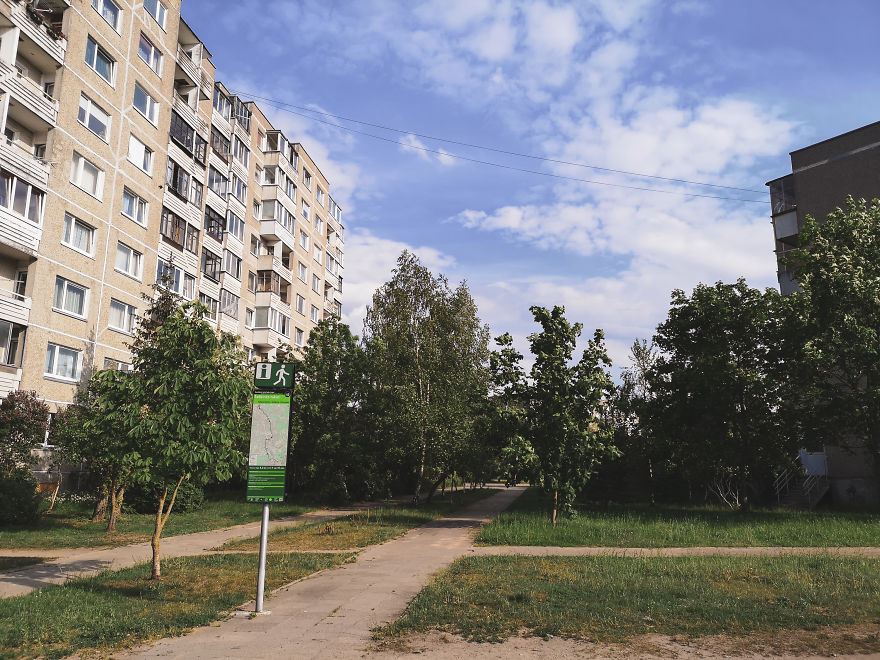
Marks of Soviet Brutalism
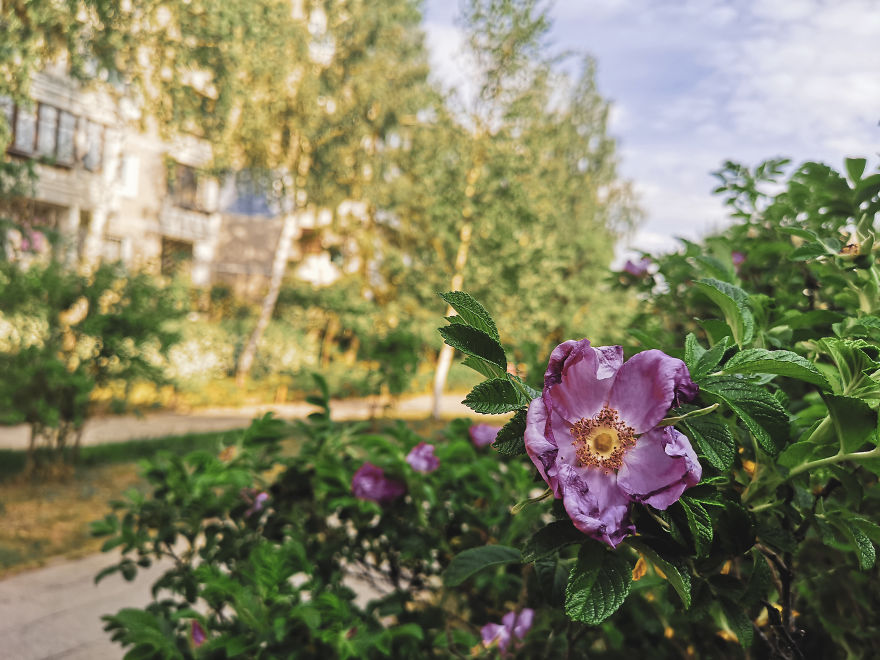
“Chernobyl” was shot in Fabijoniškės. The reason they chose this place could be that it is relatively untouched by the massive constructions works all around the quickly revitalizing capital of Lithuania, Vilnius. I never realized that, but it still looks authentic in a way that it is not ‘ruined’ by modern architecture. The Soviet brutalism could be observed at the full-blown here.
During the Soviet occupation of Lithuania, plenty of these brutalist micro-districts were built around this area, and honestly, I never could tell a difference between them. The only one I could recognize is Lazdynai (literally hazelnuts) and for a reason, it was the first such micro-district in Lithuania and it was so successful that it set the standard not only for other boroughs in Lithuania but for the whole Soviet Union. In 1974 it was rewarded by the Lenin Prize for architecture, it was the first time such an award was given to a whole district.
Brutalist micro-districts in Vilnius
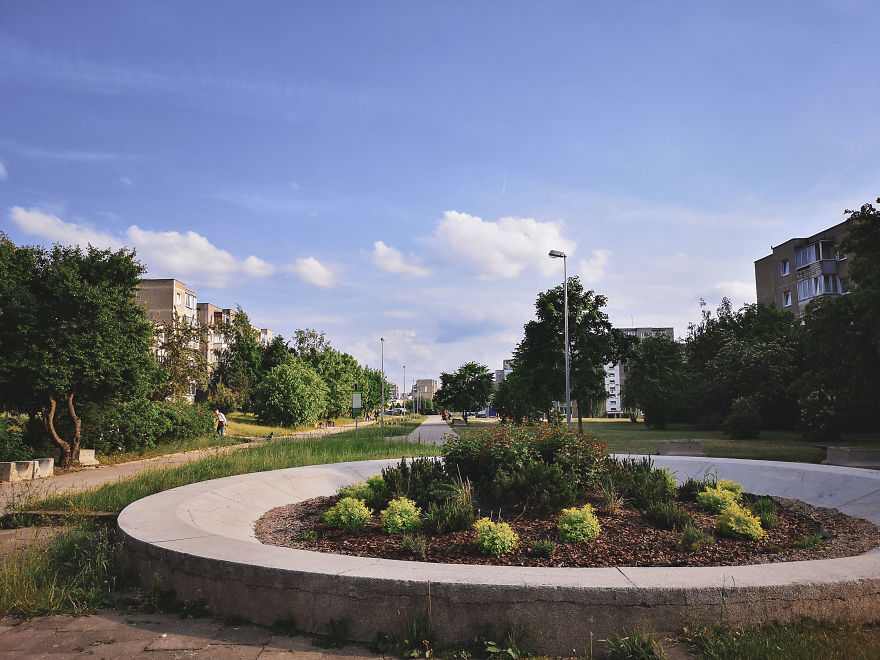
As locals, we take these micro-districts for granted, but “Chernobyl” miniseries is a good reminder that it is a part of our history, like it or not. First history lesson for any outsider must learn about Lithuania that we became a part of Soviet Union against our will and architectural monuments like these doesn’t exactly associate with positive vibes. In our minds when we speak of the Soviet Union, we mean Russia. To this everybody feels our ancient feud with our neighbor to the east.
Lesson no 2 – Lithuanians love basketball
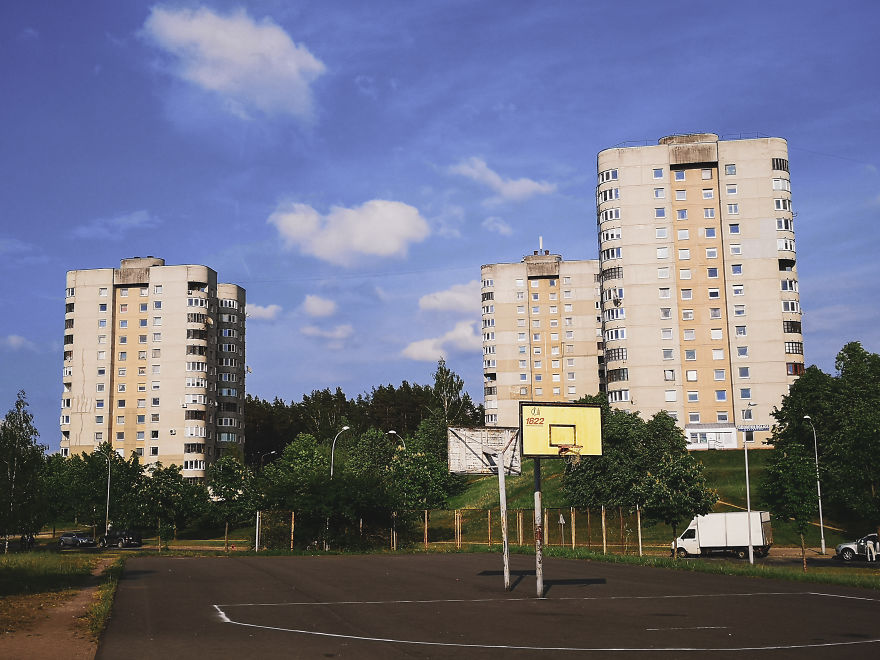
History of Fabijoniškės
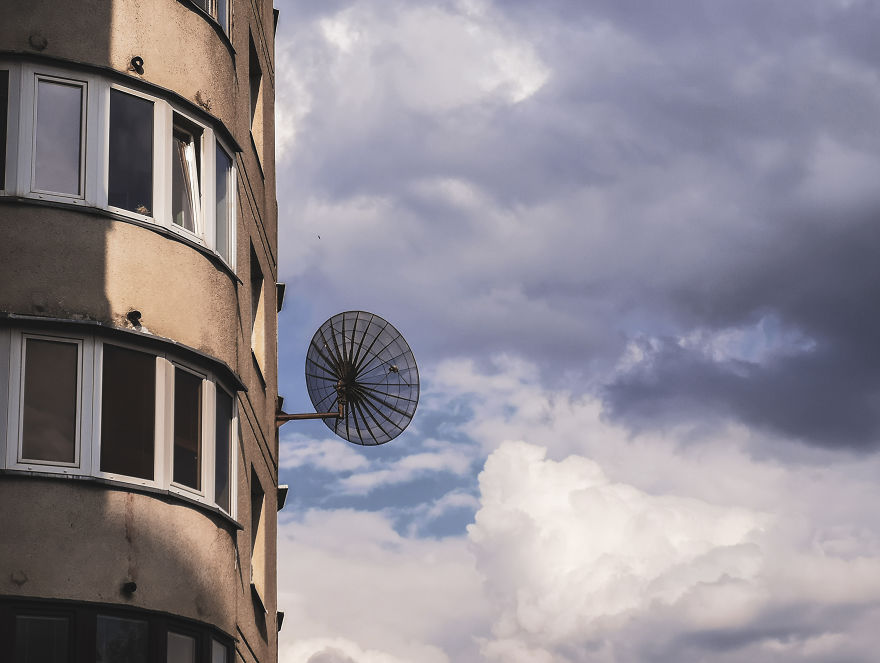
The funny thing is that the construction of Fabijoniškės started in 1986, the same year when the meltdown in the Chernobyl Nuclear Power Plant happened. Fabijoniškės is more than a decade younger than Pripyat town near the nuclear plant. Nevertheless, it proved to be a good place to shoot the miniseries because the architectural style matched to the ones of modern boroughs in Ukraine.
Even though Fabijoniškės is as old as I am, it is very hard to find any interesting information about the micro-district. To my surprise, you can find more information about Fabijoniškės in Cebuano (one of the languages spoken in the Philippines) than in Lithuanian on Wikipedia.
Fabijoniškės
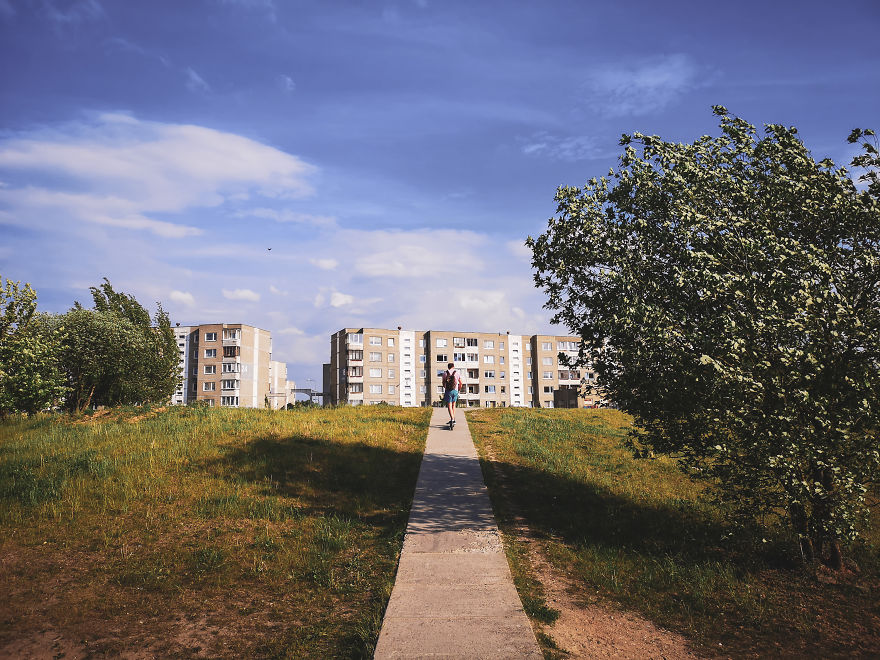
The name of this micro-district never rang a bell to me. Only after some research working on this article, I learned that before the absorption of expanding Vilnius, here stood a few hundred years old agricultural village of the same name. The word ‘fabijonas’ was used to describe somebody who grows beans. I never heard of the word, but for sure, once I move out, I will call anybody living in Fabijoniškės by that name from now on.
Fabijonai
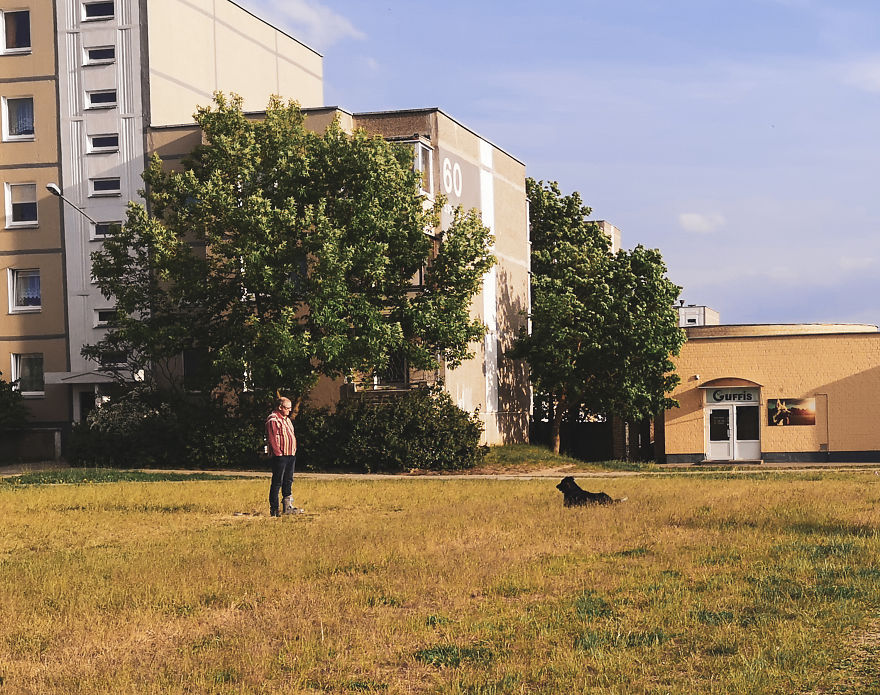
This micro-district is not iconic and I had an image that Fabijonai is not the friendliest people. I was waiting the whole time when somebody will come to me and ask what I was doing? After all, this is not Paris. It is easier to find a needle in a haystack than a tourist in this area. Nobody is taking pictures here. For that reason, I tried not to bother anyone by applying basic rules I use while hiking elsewhere. Avoid mating males and females with cubs, these types are usually the most aggressive ones. In the end, I learned that statistically, Fabijoniškės is one of the safest places in Vilnius.
Children playing outside in Fabijoniškės
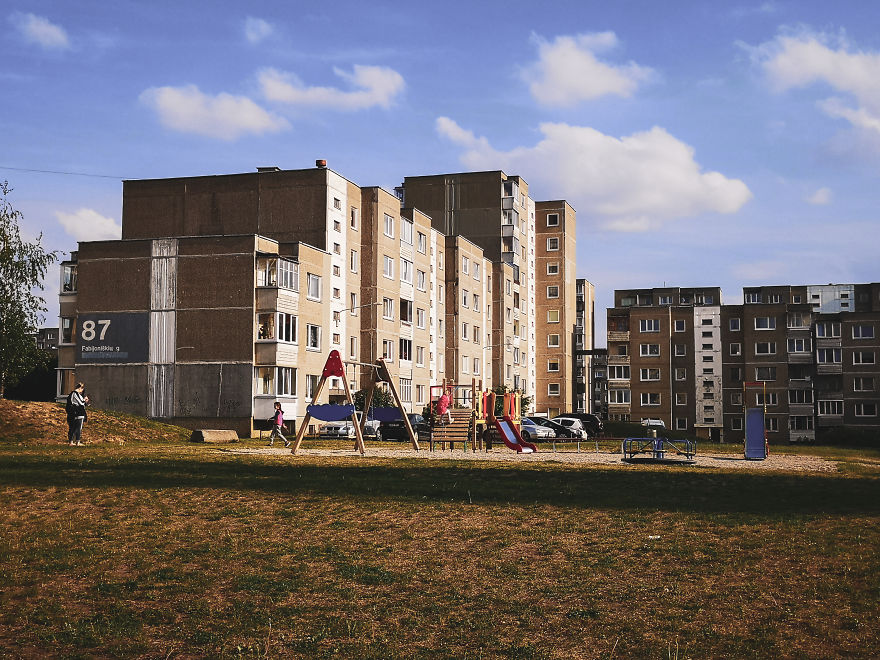
Lady walking home after shopping

To my understanding, the key distinguishing mark of Fabijoniškės are these brutalist 15-18-story buildings
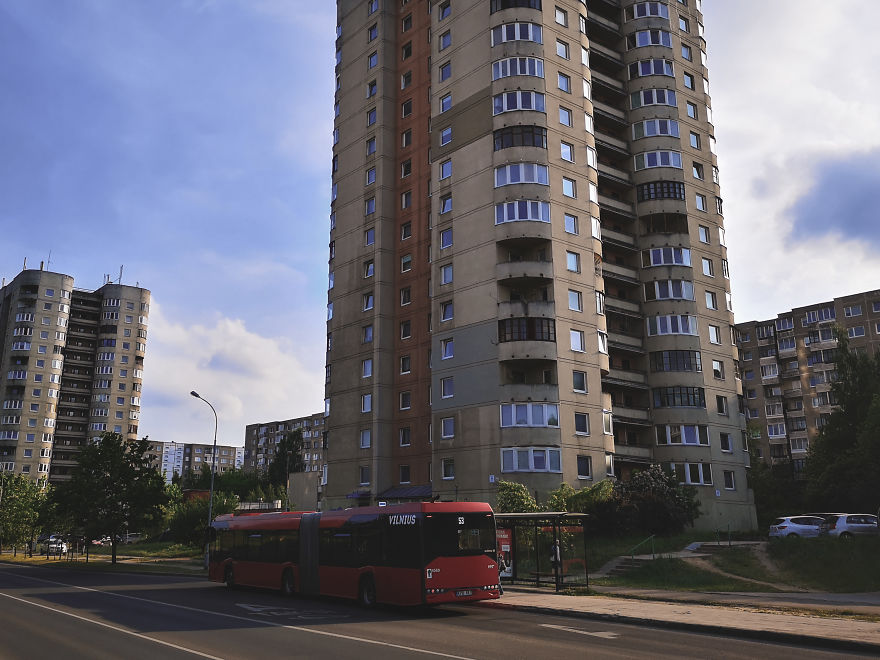
Yes, I did feel dumb making a selfie near this building

Geography of Fabijoniškės
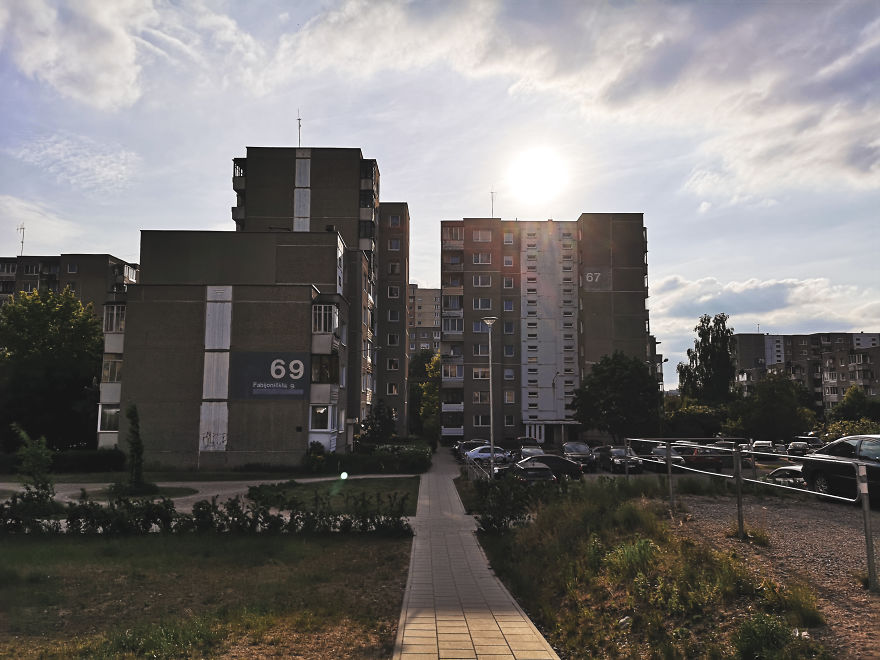
The location for the micro-districts was heavily questioned in the public and in the media. It was built near the old dump place of the city. Apparently, many feared that the area is geologically unstable and even extrasens were consulted.
As anywhere else in Lithuania, the landscape was shaped by a withdrawing glacier during the last Ice Age so it is relatively flat. Though in the neighboring micro-district Šeškinė you can find a formation which is nominated as one of the largest eskers in the world. Esker is a narrow, but long hill formatted by a withdrawing glacier in a place where rock and other debris has created a tunnel. Looking at the hills like these, I can only imagine the size of the glacier which once was here.
My impressions of Fabijoniškės
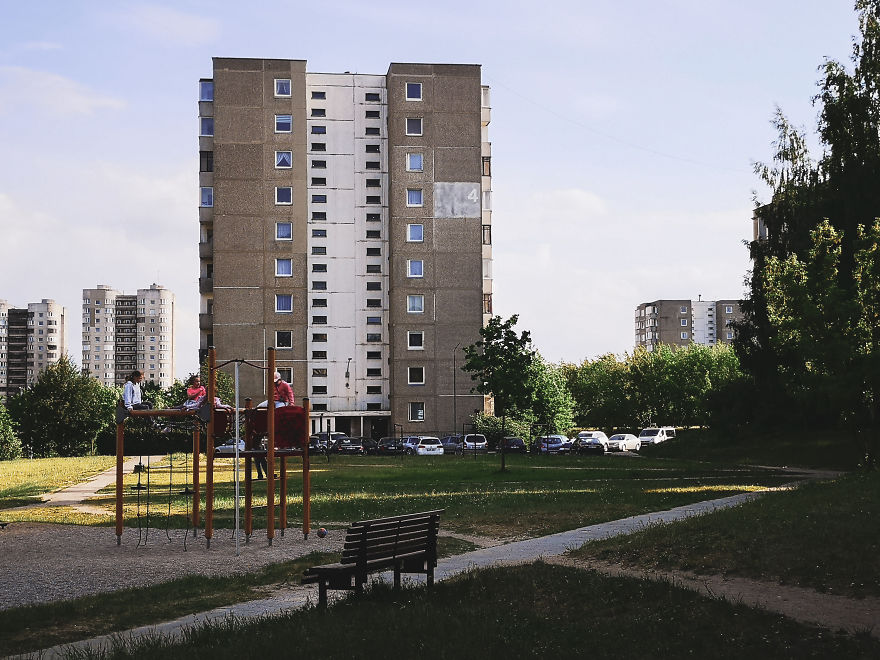
Having in mind that I didn’t set my expectations really high, I was very surprised. I live in this city for around 20 years and these micro-districts are like an enigma to me. I don’t separate them; I don’t see anything of interest here. But to my surprise it was not as grey as I expected, actually, Fabijoniškės is pretty green. The areas between the brutalist building have seen a lot of love and it appears to be only improving. In many places, children playing outside are substituted by the children playing with tablets. It is not a case in Fabijoniškės. Walking here was not only time travel to the times of Chernobyl but reminded me of my childhood when I was growing up in a similar brutalist Soviet town near Vilnius.
Neighborhood of Fabijoniškės
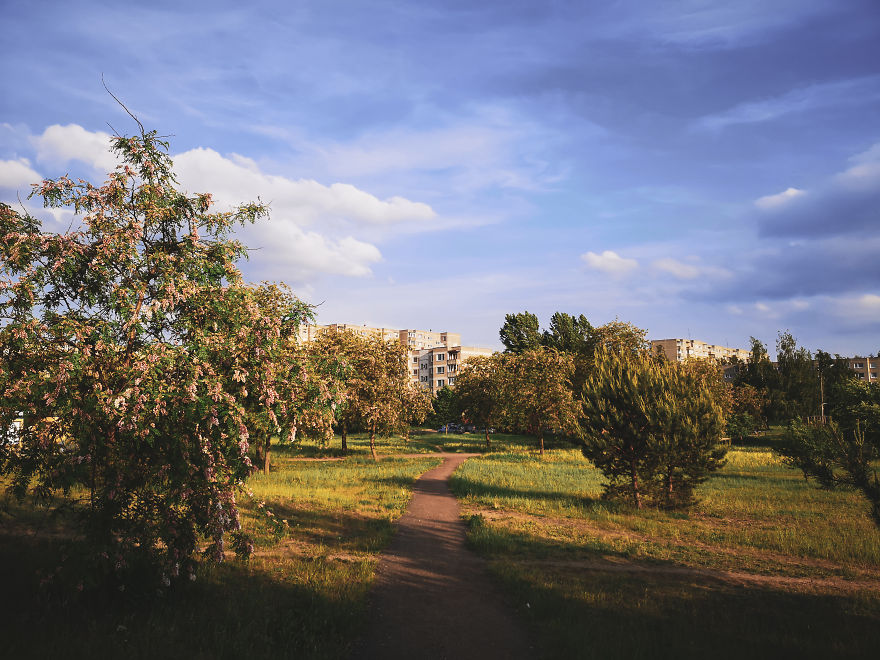
The philosophy of city expansion was simple, each micro-district was supposed to be able to function on a certain level on its own. Each borough to have a shopping center in the middle of the micro-district surrounded by similar design apartment blocks.
Central Square of Šeškinė micro-district
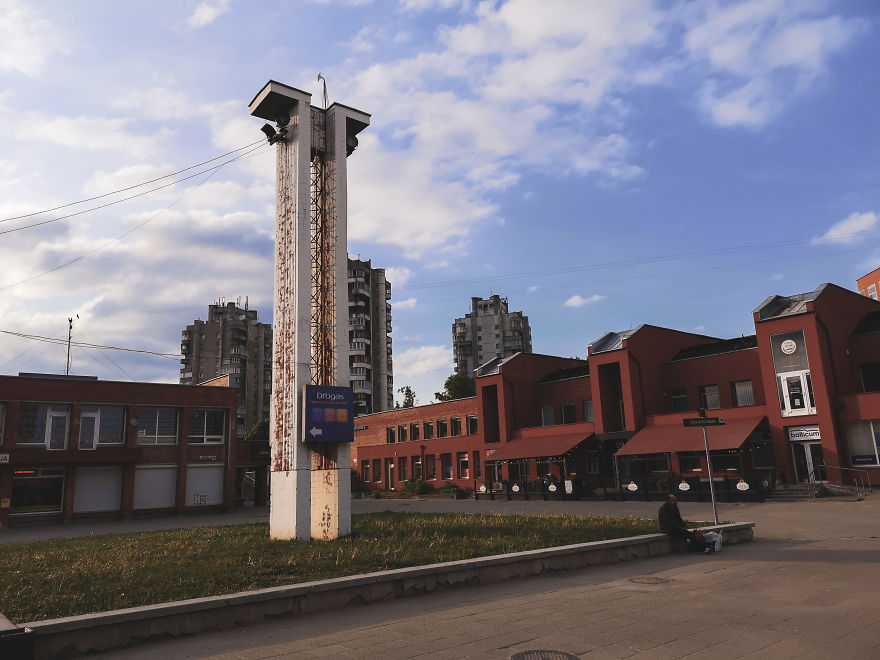
Typical Soviet brutalist building of Šeškinė micro-district
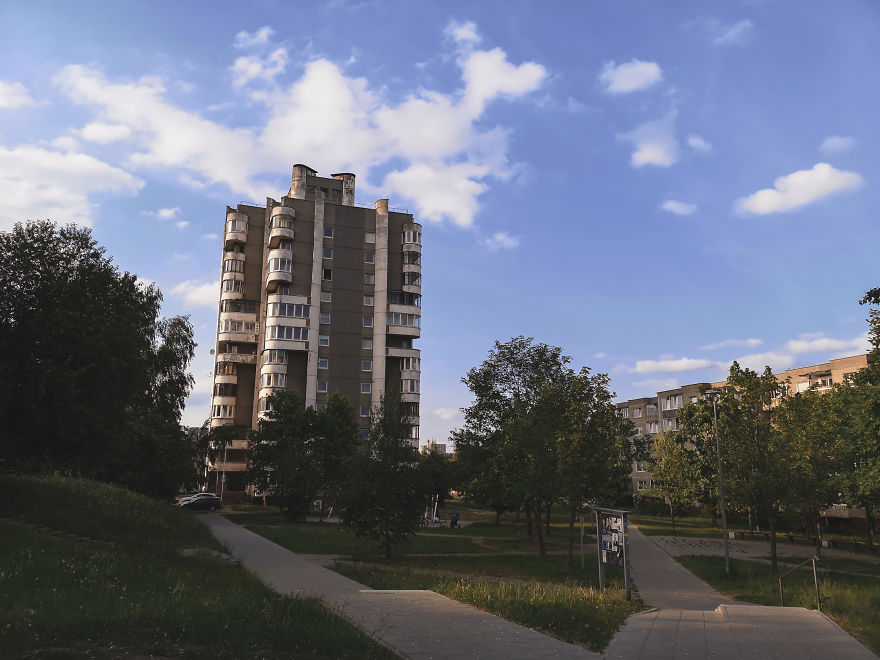
One such borough might look exotic and interesting, but the sad truth that any given micro-district nearby is almost the same. There is some difference in the design of buildings, but they all give you the same chilling effect. While there is plenty of these block buildings around Vilnius, during the Soviet times a total of new modern 10 such micro-districts were built. All in the same Northwest area of the city.
Newly paved roads near appalling brutalist buildings
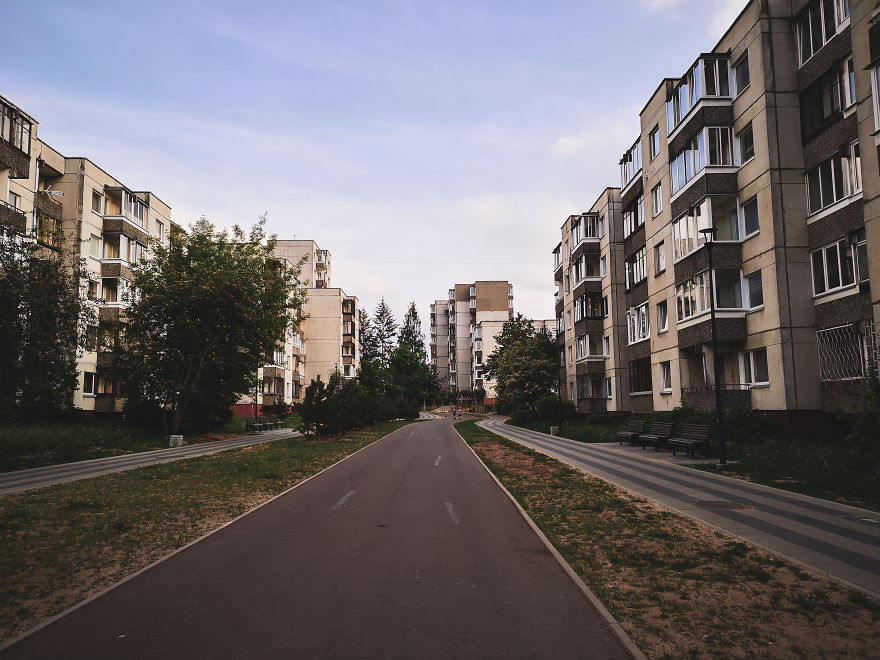
I wish they all get covered in green
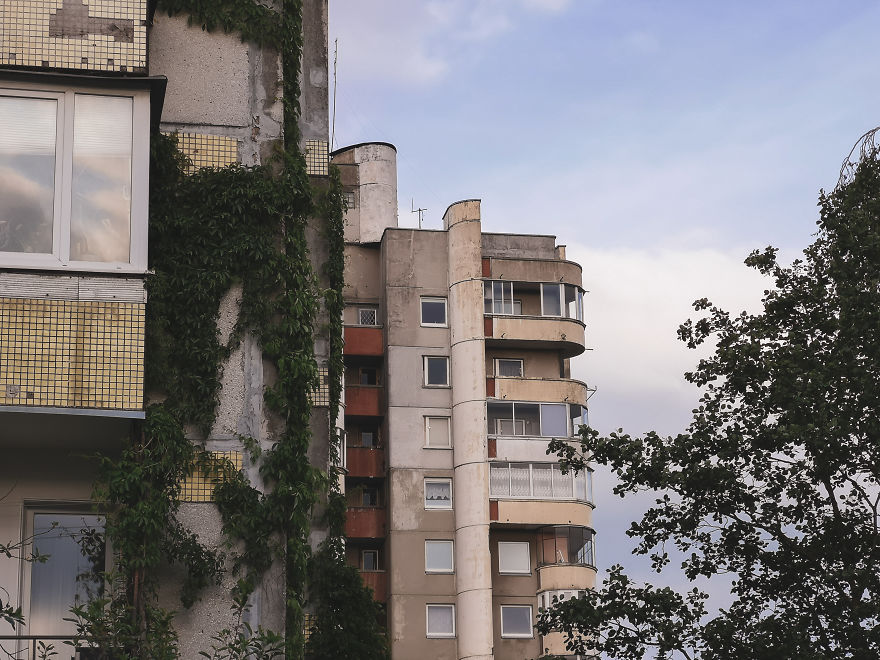
Nevertheless, there is a positive side to everything. Each micro-districts is separated from each other by a green area. There are plenty of small forests and the space between the buildings is bigger than most of the modern projects in Vilnius. Maybe it is the reason that to my surprise there is still a lot of children playing outside?
Karoliniškės Reservoir
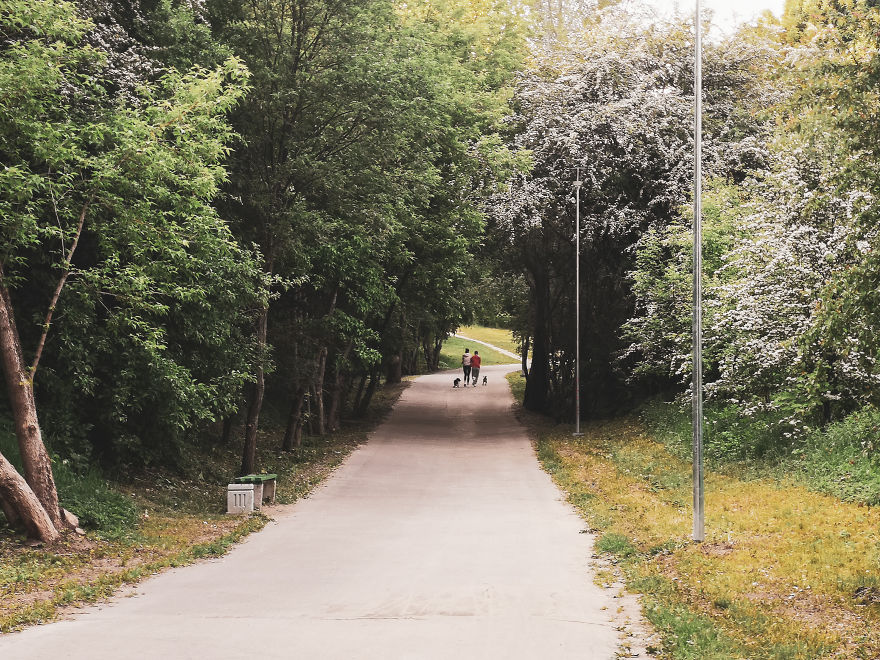
After passing Šeškinė micro-district which is ~6 years older than Fabijoniškės, the urban hiking route led me to another green area just before the central regions of Vilnius. I know these parts of the city way better. Instead of finish the official route, I climbed up a small mountain nearby, which is probably the same esker I mentioned before. From here, a narrow vista of parts of Vilnius opens up. Having in mind the whole narrative of this article, I saw this as a better place to finish my story.
Epilogue
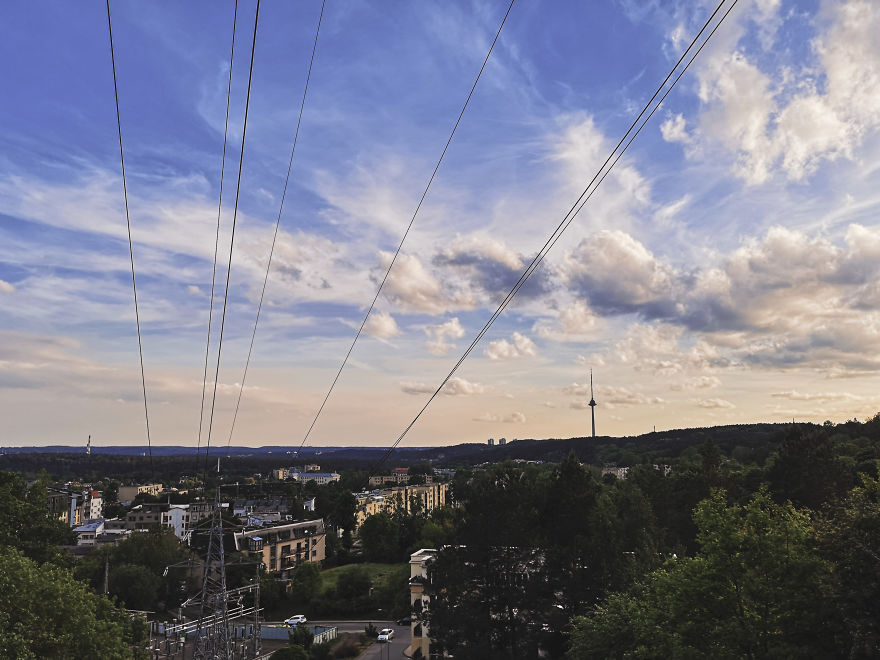
The point where the Vilnius TV tower stands is the place where this brutalist madness started. It stands right next to the famous micro-district of Vilnius, Lazdynai, in second oldest such borough Karoliniškės. At the time it was finished in 1980, it was one of the tallest buildings in the world and to this day it is the tallest building in Lithuania at 326,5m. To put it in perspective, it is just a few meters taller than Eifel tower, more than three times higher than Statue of Liberty, 30% higher than the TV tower in Berlin and around 40% smaller than CN Tower in Toronto.
January 13th events
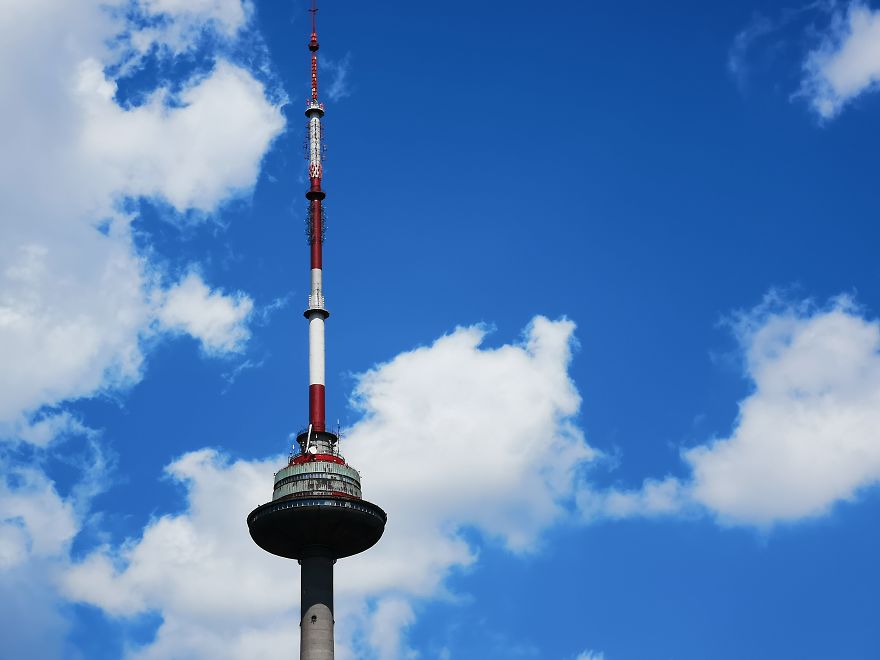
Ironically, just 11 years after the completion of construction, which was funded by the 11th 5-year plan of the Soviet Union, the Vilnius TV Tower played a major role in the events following the Act of the Re-Establishment of the State of Lithuania on March 11, 1990. Less than a year later after the independence declaration, the Soviet Union tried to take us back by force again and Vilnius TV Tower was one of their main targets. It provided the ‘internet’ to the people at that time.
Many peacefully stood armless against the tanks and other enemy weapons. 14 people died that day, but in the end, the Soviet Union did not choose to do what China did in 1989 Tiananmen Square protests, which ended with a massacre. To this day nobody knows how many people died over there.
Ever since on January 13th, we mourn those who we lost. Even though I was only one-year-old that day, without a doubt, it was the most life-changing day of my life.
from Bored Panda http://bit.ly/2JYXsl0
via Boredpanda